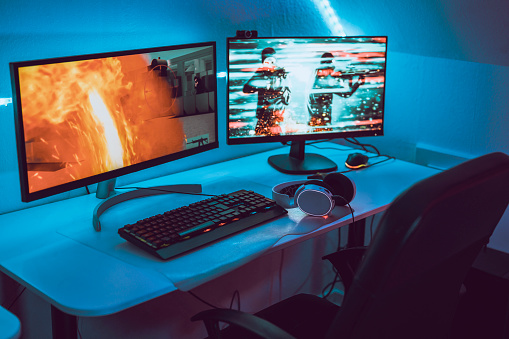- Get link
- X
- Other Apps
A graphics card! Okay, we're exaggerating a bit: maybe you know what a graphics card is, but maybe you also don't know what makes it up?
Here are some rules to know:
- Not all PCs have a graphics card! If your computer is intended for office use (or in any case not very graphic), a GPU (G = "Graphics") already integrated in any processor is more than sufficient. And some can be very successful!
- A graphics card is made up of different elements:
1- A graphics processor, which determines the frequency (expressed in MHz or GHz) and the fineness of the engraving of the electronic elements…
2- Its RAM ranging from 1 to 32 GB and using different names (GDDR5, GDDR6, etc)
3- Its cooling, which can be replaced or multiplied by other additions of fans or water cooling… (useful for large graphics cards really in demand!).
NVIDIA vs AMD: War of the Titans
There are two manufacturers of graphics cards in the world: Nvidia and AMD , two brands with different qualities to choose from according to your needs.
- AMD stands for simplicity and good value for money. Their cards have fewer on-board options, but the essentials are there: multi-screen management, Free sync anti-tearing of the image, automatic resolution adaptation or VR optimization… we have done the tour!
- Nvidia, the market leader. Packed with various technologies, their graphics cards are famous for their very high performance. Improvement of lights, frequency, visual rendering in addition to the usual, everything is done to optimize your display ... at a price certainly higher.
Asus, MSI, Gigabyte?
When you look at the name of a graphics card, you can see many brand names like “Corsair”, “MSI”, etc. attached to the rest of the description. These are the "assemblers", those who assemble the cards by adding their sauce: more memory, better cooling, frequency ... Do not hesitate to check the options of your future adored card offered by its assembler!
I want it in my eyes!

Ok… but if you have a low-power PC or a small screen, there's no point aiming too high!
First and foremost, choose a card for YOUR needs.
- Take a card compatible with your motherboard, otherwise it is useless! Oh yes, also be careful to check its size: it would be a shame if it couldn't fit in your little box!
- Adapt your power according to your screen (do not hesitate to follow our screen guide ...): Full HD (1920 x 1080p), 2K / WQHD (2560 x 1440p) or 4K (3840 x 2160p) resolution, use VR or 3D … Up to you !
- The race for power is not necessarily useful or visible. On the other hand, do not hesitate to check its consumption (indicated in Watts): a less greedy graphics card, it is also a quieter card ... and conversely, a large graphics card, it is a card energy intensive and a large power supply to install!
You do not know which power supply is compatible with your graphics card? Our Configurator will tell you! - Check the connections offered and your own equipment: Display Port (the most recent and therefore the most recommended), DVI, HDMI, VGA .
- Get link
- X
- Other Apps
Comments
Post a Comment